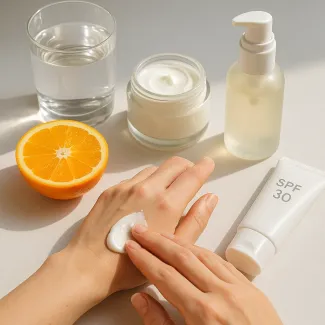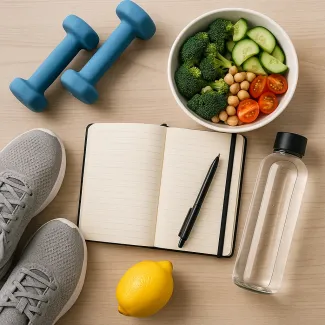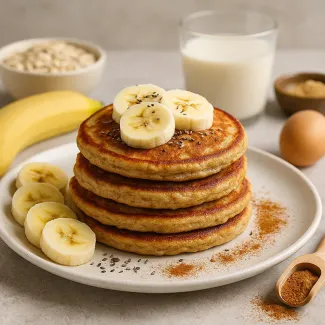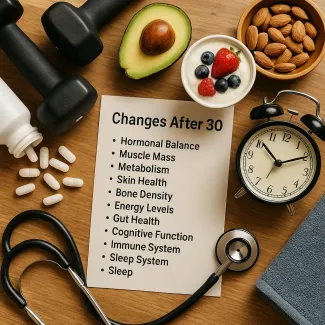
Unlock radiant skin with a smart daily care ritual
Why proper hydration and UV protection are the foundation of skin health
Healthy, radiant skin is not just the result of good genetics or expensive products—it is the outcome of consistent, smart daily habits. Among the most effective and evidence-backed practices for maintaining youthful, vibrant skin are hydration and sun protection. These two pillars form the essential base of any skincare routine, not just for aesthetic reasons but also for long-term skin health and overall well-being. By integrating moisture and SPF into your lifestyle, you support your skin’s ability to defend, repair, and regenerate naturally.
The science behind skin hydration
Understanding the skin barrier and moisture loss
The skin’s outermost layer, the stratum corneum, functions as a barrier against environmental damage and moisture loss. When this layer is compromised due to dryness, pollution, or aging, the result is dull, flaky, and irritated skin. Proper skin hydration supports barrier function, improves texture, and enhances elasticity.
Key contributors to trans-epidermal water loss (TEWL) include low humidity, harsh cleansers, and insufficient water intake. By replenishing the skin with external moisturizers and boosting internal hydration, you can strengthen the skin’s natural barrier and minimize signs of premature aging.
Internal hydration: how much water is enough?
Maintaining hydration from within is crucial. While the “8 glasses a day” rule offers a general guideline, optimal water intake depends on your age, activity level, climate, and diet. A more accurate recommendation is about 30–35 ml of water per kilogram of body weight daily. In addition to pure water, consuming water-rich fruits and vegetables—like cucumbers, melons, and oranges—can significantly contribute to hydration.
Topical moisturizers: humectants, emollients, and occlusives
Effective moisturizers typically contain three types of ingredients:
- Humectants like hyaluronic acid and glycerin, which draw water into the skin.
- Emollients such as ceramides, fatty acids, and squalane, which soften and fill cracks in the skin barrier.
- Occlusives like petrolatum, shea butter, or dimethicone, which seal in moisture and prevent water loss.
The best moisturizers combine all three to address multiple levels of hydration. For oily or acne-prone skin, look for lightweight, non-comedogenic formulas. For mature or dry skin, thicker creams with a strong occlusive layer are more beneficial.
Daily sun protection: your best anti-aging ally
How UV radiation damages skin at every level
The sun emits ultraviolet radiation (UVA and UVB) that penetrates the skin and triggers DNA mutations, collagen breakdown, and inflammation. While UVA rays are associated with premature aging and wrinkles, UVB rays are primarily responsible for sunburns and contribute to skin cancer.
Both types of radiation are harmful even on cloudy days or indoors near windows. Cumulative exposure can cause hyperpigmentation, loss of firmness, and textural changes—signs that accelerate with age.
Choosing the right SPF for daily use
For everyday protection, dermatologists recommend using a broad-spectrum sunscreen with at least SPF 30. This level blocks approximately 97% of UVB rays. Higher SPFs (like SPF 50) offer slightly more protection but must still be reapplied every 2–3 hours for consistent coverage.
Look for sunscreens labeled as:
- Broad-spectrum (UVA + UVB protection)
- Non-comedogenic (won’t clog pores)
- Water-resistant (if active or sweating)
Physical vs. chemical sunscreens
Mineral sunscreens (also called physical sunscreens) use zinc oxide or titanium dioxide to create a barrier that reflects UV rays. They are ideal for sensitive skin and provide immediate protection.
Chemical sunscreens absorb UV rays and convert them to heat. Ingredients like avobenzone, octinoxate, and oxybenzone are common, although some can irritate sensitive skin. Many modern formulations combine both for maximum effect.
Building a simple, effective morning skincare routine
Cleanse gently but thoroughly
Start your day with a mild, pH-balanced cleanser that removes excess oils and nighttime products without stripping the skin. Avoid harsh sulfates or alcohol-based products.
Layer hydration before protection
Apply a hydrating toner or essence followed by a serum with hyaluronic acid. Seal in the hydration with a moisturizer suited to your skin type. Always follow with a generous layer of SPF—even if your foundation contains sunscreen, it’s not enough.
Don’t skip the neck, ears, and hands
These areas are often overlooked but just as vulnerable to sun damage and dehydration. Extend your product application to all exposed skin for full protection.
Nighttime skincare: repair and replenish
Why hydration is just as important at night
Overnight, your skin enters repair mode, producing collagen and renewing cells. Hydration supports these processes and helps offset moisture lost during the day. Use richer, nourishing creams with ceramides, niacinamide, or retinoids to accelerate repair.
Avoid heavy exfoliation if skin is dry
Over-exfoliating can disrupt the barrier. Limit chemical exfoliants (AHAs, BHAs) to 2–3 times per week and follow with deep hydration.
Seasonal strategies for hydration and sun defense
Winter: combat dry air and low humidity
Use a humidifier indoors, choose thicker moisturizers, and apply SPF even on cloudy days. Cold air and indoor heating dehydrate skin more than people realize.
Summer: stay light but diligent
Switch to gel-based moisturizers, wear non-greasy SPF, and increase oral hydration. Reapply sunscreen more frequently, especially with outdoor activity.
Spring and fall: transition slowly
As seasons change, so do your skin’s needs. Adjust products gradually, and watch for signs of imbalance like oiliness, flaking, or sensitivity.
Hydration and sun care across skin types
For oily and acne-prone skin
Use oil-free moisturizers with niacinamide and lightweight sunscreen with matte finish. Avoid thick occlusives and stick to non-comedogenic ingredients.
For dry and sensitive skin
Opt for ceramide-rich creams, fragrance-free formulas, and mineral-based SPF. Layer hydrating toners and serums for deep moisture.
For combination skin
Balance is key—use hydrating serums and gel moisturizers for oily zones and richer cream on drier areas. Consider a dual sunscreen approach if needed.
Anti-aging benefits of consistent hydration and SPF use
Reduces fine lines and wrinkle depth
Hydrated skin appears plumper and more elastic. SPF prevents photoaging, a major contributor to early wrinkles.
Maintains even skin tone
Sunscreen and hydration prevent hyperpigmentation, sun spots, and post-inflammatory darkening from acne or irritation.
Preserves collagen and elasticity
UV exposure breaks down collagen. Preventing this preserves firmness and youthful contours.
The link between hydration, sun care, and mental health
Self-care and confidence
Consistent routines foster confidence and provide a sense of control. Glowing skin can boost mood and encourage healthier habits in other areas of life.
Preventing inflammation that affects the brain
Chronic skin inflammation contributes to systemic oxidative stress, which has been linked to mood changes and brain fog. Proper skin care helps regulate this.
Integrating hydration and sun protection into your lifestyle
Skin-friendly diet
Eat foods rich in:
- Water (cucumbers, melons, celery)
- Antioxidants (berries, leafy greens)
- Healthy fats (avocados, olive oil)
- Collagen boosters (bone broth, citrus fruits)
Hydration and skin repair start from within.
Daily habits that amplify skin results
- Sleep 7–9 hours to allow cell regeneration
- Avoid alcohol and smoking, which dehydrate skin
- Exercise regularly to improve circulation
- Limit hot showers that strip skin oils
Products to keep in your bag
Always carry a hydrating mist, SPF stick, and lip balm with SPF. Reapply throughout the day for continuous protection.
How hormones affect hydration and skin protection needs
During menstrual cycles
Fluctuations in estrogen and progesterone can make skin oilier or drier. Adjust hydration and sunscreen accordingly.
During pregnancy
Skin may be more sensitive. Use fragrance-free, mineral-based products and stay vigilant about sun exposure.
After age 40
Reduced collagen and sebum production require richer moisturizers and targeted SPF. Incorporate retinol and peptides as part of repair.
Best natural ingredients for hydrated, protected skin
- Aloe vera: Soothes and hydrates
- Green tea extract: Antioxidant with UV-protective effects
- Licorice root: Helps with pigmentation
- Chamomile: Calms inflammation
- Vitamin C: Boosts collagen and protects from free radicals
What to avoid in your hydration and SPF routine
- Alcohol-based toners: Extremely drying
- Essential oils in high concentrations: Can irritate sensitive skin
- Expired sunscreen: Less effective and may separate
- Skipping sunscreen on cloudy days: UV rays still penetrate clouds
Addressing common myths about hydration and sun protection
- “Oily skin doesn’t need moisturizer”: False. Hydration balances sebum production.
- “Darker skin doesn’t need sunscreen”: Untrue. UV rays damage all skin tones.
- “One SPF application lasts all day”: Incorrect. Reapply every 2–3 hours.
- “Drinking water alone hydrates skin”: External moisture is just as vital.
Tracking progress: how to know it’s working
- Skin feels softer, less tight or flaky
- Complexion appears brighter, more even-toned
- Fewer breakouts or flare-ups
- Makeup sits better and lasts longer
Skincare as a wellness ritual, not just a routine
By framing hydration and sun protection as a daily act of care, you can cultivate long-term skin wellness. The focus isn’t perfection—it’s consistency, knowledge, and mindful choices.





